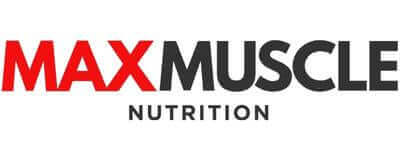Active Recovery: The Key to Balance in Your Workout Routine
Are you working out too much?
We’ve all been there. You’re pushing yourself hard, working out 5-6 days a week, and wondering, “Am I overdoing it?” The answer depends on several factors, like your fitness level, workout intensity, and how well you’re balancing recovery with training.
Let’s break down active recovery—a technique that helps you maintain the balance between pushing hard and allowing your body to recover.
What is Active Recovery?

Active recovery is about staying in motion without overloading your muscles. It involves low-intensity activities such as walking, swimming, or yoga that promote blood flow, helping your muscles recover faster by delivering nutrients and clearing waste products. Instead of sitting still on a rest day, active recovery keeps your body limber and aids in muscle repair.
Why is Active Recovery Important?
When you work out, your muscles undergo microscopic damage. Without proper recovery, your body can’t repair itself, leading to fatigue, reduced performance, and even injury.
Active recovery helps to:
- Promote blood flow to muscles
- Reduce soreness and stiffness
- Enhance flexibility and mobility
- Speed up muscle repair
Learn more about recovery here.
Signs You’re Overtraining

How do you know if you’re pushing too hard? Watch for these signs of overtraining:
- Persistent fatigue that doesn’t go away, even with rest
- Increased irritability or mood swings
- Performance plateaus despite continued effort
- Frequent injuries or soreness
- Lack of motivation to work out
If you’re experiencing these symptoms, it may be time to introduce more active recovery days into your week. What is Overtraining syndrome?
Active Recovery vs. Non-Active Recovery Days
Active Recovery Days
On an active recovery day, the goal is to stay in motion, but without the intensity of a normal workout. Activities like walking, light cycling, swimming, yoga, or foam rolling can help maintain circulation and promote recovery. These exercises stimulate your muscles just enough to deliver nutrients and flush out waste without causing further damage.
Non-Active Recovery Days
Non-active recovery days are full rest days where you completely rest, giving your body the time it needs to heal. These days are important if you’ve had a series of high-intensity workouts or are feeling mentally or physically burnt out.
Both types of recovery play an essential role in a balanced fitness routine.
Do You Need Active Recovery?

Yes! If you’re training frequently, active recovery can be incredibly beneficial. By incorporating active recovery into your routine, you’ll:
- Recover faster
- Stay limber
- Reduce soreness
Active recovery acts as a bridge between intense workout days and full rest days, keeping your body engaged without pushing it to its limits.
What Should You Do on Rest Days?

Maximize your recovery with these simple tips:
- Eat Well: Fuel your body with plenty of protein, healthy fats, and carbohydrates to support muscle repair.
- Stay Hydrated: Drinking water helps flush out toxins and reduce muscle soreness.
- Get Plenty of Sleep: Aim for 7-9 hours of sleep each night to allow your muscles to recover.
- Do Light Stretching: Keep your muscles loose and improve your flexibility with gentle stretching or mobility work.
Experience Rapid Recovery and Unparalleled Performance with ARM Plus - Your Post-Workout Solution
Conclusion
To sum it up, working out 5-6 days a week can be effective, but only if you’re allowing your body to recover. Incorporating active recovery days into your routine helps you stay in motion while promoting muscle repair, and non-active rest days give your body the full rest it needs.
By focusing on nutrition, hydration, and sleep, you can maximize your recovery and continue making progress without risking injury or burnout.
Got recovery tips that work for you?
Share them with our community @maxmuscleatl and inspire others to train smarter!
Mike Pringle
Author Bio:
Mike Pringle is a former professional football player with 15 years of experience, a certified fitness trainer, nutrition coach, and owner of Max Muscle Sports Nutrition - Stone Mountain with over 13 years of experience helping individuals achieve their health and fitness goals through supportive group dynamics.

